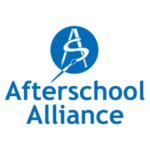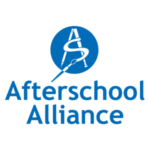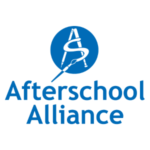High School Research
This report offers a number of specific teaching techniques that research suggests will help 4th- to 12th-grade students in our nation’s schools. The report focuses on all students, not just those who display writing difficulties, although this latter group is deservedly the focus of much attention. The premise of this report is that all students need to become proficient and flexible writers. In this report, the term low-achieving writer is used to refer to students whose writing skills are not adequate to meet classroom demands. Some of these low-achieving writers have been identified as having learning disabilities; others are the “silent majority” who lack writing proficiency but do not receive additional help. As will be seen in this report, some studies investigate the effects of writing instruction on groups of students across the full range of ability, from more effective to less effective writers, while others focus specifically on individuals with low writing proficiency.
National Center for Public Policy and Higher Education (2003).
This project began with an enigma. In surveys, the parents of Hispanic high school seniors place enormous emphasis on higher education. By significantly higher percentages than the rest of the population, the parents of Hispanic high school seniors believe that a college education is an essential prerequisite for a good job and a comfortable middle-class lifestyle. However, this desire for higher education does not translate into reality. Compared to non-Hispanic whites or African-American students, Hispanic students are much less likely to obtain higher education degrees. There is clearly a gap, in other words, between what Hispanic parents say they want for their children, and the paths those children actually follow.
Southwest Educational Development Laboratory (2004).
Mike Schmoker offers practical advice for school improvement, presenting changes that are not costly or disruptive to high schools. The second article in this issue takes us to Irving, Texas, where Irving ISD has established successful smaller learning communities that are making a difference for students in this largely working-class community. Irving’s SLC program has a strong vocational component, which is also present at another school visited—Garza Independence High School in Austin, Texas. Garza is an alternative high school that is not a holding tank for troublemakers, as is often the perception for alternative schools. It is a school that accommodates individual differences and learning styles, a school where most of its graduates go on to college.
Not only are middle and high school-aged youth difficult to engage in after school activities, but they are more likely to have unique demands on their time in the hours after school. This issue brief highlights the challenges providers face in serving older youth and the innovative strategies that programs have used to recruit and retain older youth in after school.
Based on both statistical analysis of employment data and extensive research involving over 300 faculty members from two and four year postsecondary institutions, managers, and high school educators, the American Diploma Project (ADP) benchmarks concretely define the English and math that graduates must master to succeed in credit-bearing college courses and high-performance, high-growth jobs. Key findings: employers’ and colleges’ academic demands for high school graduates have converged, yet states’ current high-school exit expectations fall well short of those demands.
Education Trust and partners Achieve and Fordham Foundation (2004).
Although much of the funding and programming for afterschool targets younger children, there are myriad advantages for older youth participation in afterschool. This brief examines the growing need for afterschool programming for teens.
This statewide effort began in 2002. The program awards five one-year grants to programs that provide opportunities to underachieving high school-aged youth in the state. This WestEd report evaluates the program’s initial years of implementation. (WestEd, 2006).
With a job market that requires nearly all workers to have a high school diploma, America faces a huge challenge with the dropout crisis. This brief examines the potential role high school afterschool could play in decreasing dropout rates, tackling the achievement gap, and keeping kids on track towards successful futures.
Draws on findings from four studies by MDRC, a nonpartisan, nonprofit research firm.
Findings from these evaluations suggest that positive change is associated with a combination of instructional improvement and structural changes in school organization and class schedules. The brief is organized according to five cross-cutting challenges that high schools face in seeking to influence student outcomes: assisting students who enter high school with poor academic skills, improving instructional content and practice, creating a personalized and orderly learning environment, providing work-based learning opportunities and preparing students for the world beyond high school, and stimulating change in overstressed high schools.
Over one million students who enter ninth grade each year fail to graduate with their peers four years later because they drop out of school. Seven thousand students drop out of school every day, and each year roughly 1.2 million students fail to graduate from high school. More than half of these students are from minority groups. After school programs are a proven way to address the issues and risk factors that lead to dropout and provide a path to graduation and beyond.









